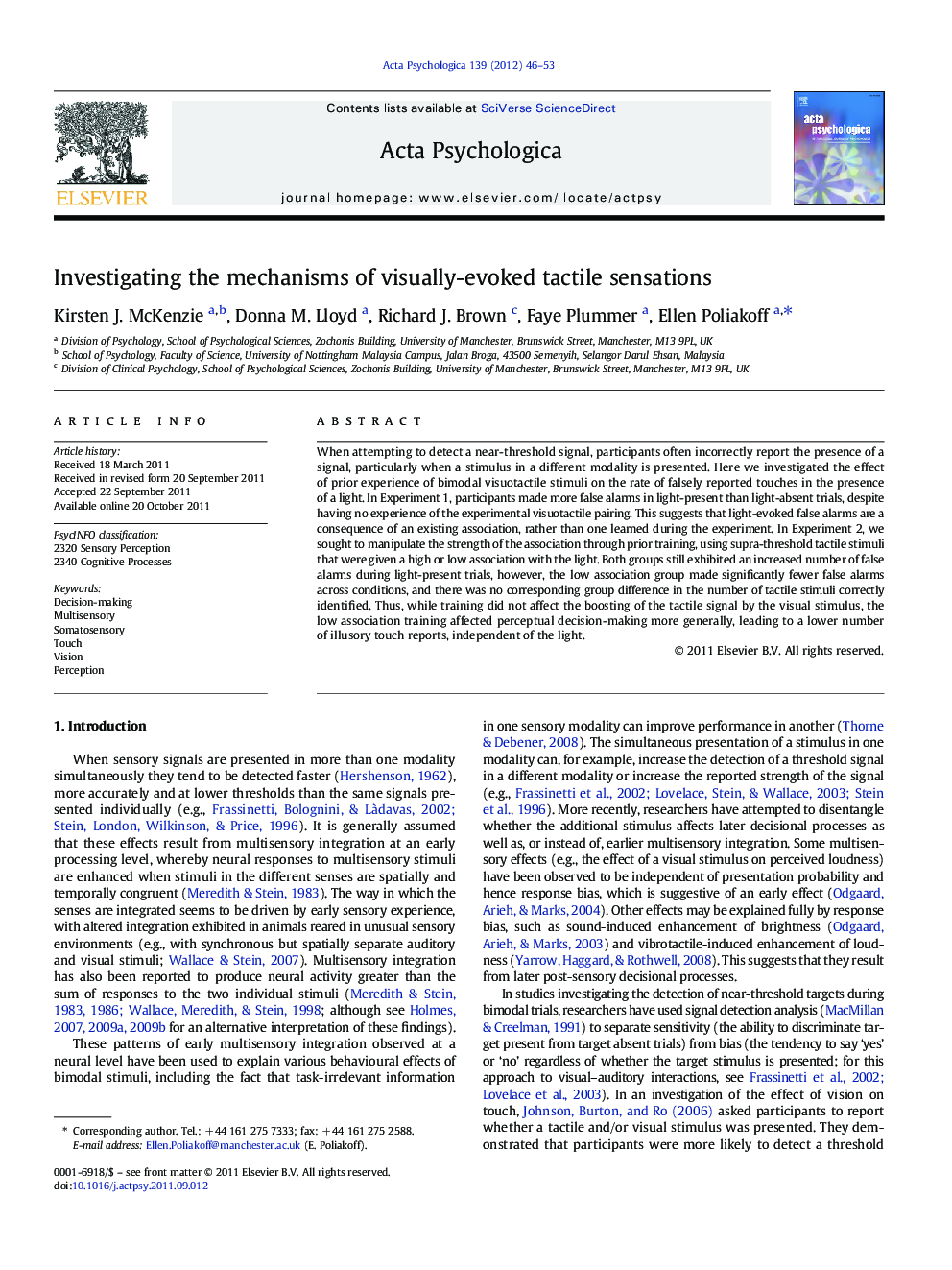| Article ID | Journal | Published Year | Pages | File Type |
|---|---|---|---|---|
| 920092 | Acta Psychologica | 2012 | 8 Pages |
When attempting to detect a near-threshold signal, participants often incorrectly report the presence of a signal, particularly when a stimulus in a different modality is presented. Here we investigated the effect of prior experience of bimodal visuotactile stimuli on the rate of falsely reported touches in the presence of a light. In Experiment 1, participants made more false alarms in light-present than light-absent trials, despite having no experience of the experimental visuotactile pairing. This suggests that light-evoked false alarms are a consequence of an existing association, rather than one learned during the experiment. In Experiment 2, we sought to manipulate the strength of the association through prior training, using supra-threshold tactile stimuli that were given a high or low association with the light. Both groups still exhibited an increased number of false alarms during light-present trials, however, the low association group made significantly fewer false alarms across conditions, and there was no corresponding group difference in the number of tactile stimuli correctly identified. Thus, while training did not affect the boosting of the tactile signal by the visual stimulus, the low association training affected perceptual decision-making more generally, leading to a lower number of illusory touch reports, independent of the light.
► We investigated reports of ambiguous touch in the absence a stimulus (false alarms). ► Even without experience of light and touch together, the light boosted false alarms. ► We conclude that light-evoked touches are due to a pre-existing association. ► Training to lower this association reduced false alarms independent of the light. ► We conclude that training affected perceptual decision-making more generally.
